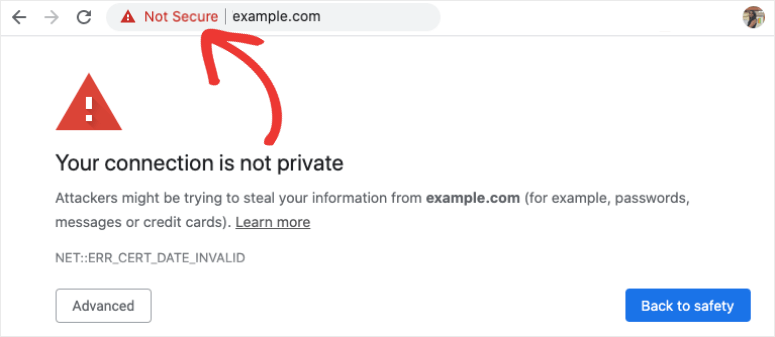In the ever-evolving landscape of the internet, security has become a paramount concern for website administrators and users alike. Picture this: you land on a site, eager to explore, only to be confronted with a glaring message that reads, “This Site is Not Secure.” What does this warning signify? How does it affect your browsing experience? And most importantly, how can you rectify the issues it presents? Let us delve deeper into the construct of website security and unravel the enigma of those ominous warnings.
At its core, a website’s security hinges on the encryption of data transmitted between your browser and the server hosting the site. This encryption is primarily achieved through a protocol known as HTTPS, which stands for Hypertext Transfer Protocol Secure. When a website is secured with HTTPS, it means that any data exchanged—be it your login credentials, personal information, or payment details—is encrypted and obscured from prying eyes.
In stark contrast, sites tagged with “Not Secure” solely utilize HTTP, which lacks the encryption layer provided by HTTPS. This vulnerability permits attackers to intercept the data flowing between the user and the server, jeopardizing sensitive information. One can liken this predicament to mailing a postcard, where anyone can easily read its contents as it travels through the postal system. Would you feel comfortable entrusting sensitive documents in a similar manner? The answer for many is a resounding no.
With the proliferation of cyber threats, users have grown increasingly wary. A “Not Secure” warning could deter potential customers, stifle engagement, and tarnish your online reputation. However, amidst this digital chaos, new questions arise: Why do some websites still operate on HTTP? Is it an oversight, or do some just not perceive the urgency of the issue?
Many smaller websites or personal blogs may forego HTTPS due to the perceived complexity of implementation or the cost associated with obtaining an SSL (Secure Sockets Layer) certificate. This decision may stem from a lack of technical acumen or simply an underestimation of the risks involved. However, as the digital environment matures, the importance of securing every website—regardless of size—becomes increasingly evident.
Obtaining an SSL certificate is far more accessible today than it was in the past. Various reputable organizations provide free SSL certificates, such as Let’s Encrypt, allowing even the most budget-conscious site owners to secure their platforms. Transitioning to HTTPS is not merely a cosmetic upgrade; it’s a fundamental shift that conveys trustworthiness to visitors. Wouldn’t it be wiser to invest in a digital insurance policy that protects both you and your users?
Moreover, search engines like Google have begun penalizing sites lacking HTTPS in their ranking algorithms, making the need for security not just a best practice but also a necessity for maintaining visibility. A website that appears in the murky depths of search results can experience noticeable declines in traffic, which can have cascading effects on revenue and growth. Hence, the stakes are high, and the challenge is clear: embrace encryption or risk languishing in obscurity.
Transitioning from HTTP to HTTPS can seem daunting, but it doesn’t have to be. The process involves several key steps, starting with obtaining an SSL certificate, encompassing both validation and installation on your web server. Once secured, ensure that all links on your site function correctly under HTTPS. This may necessitate updating internal links and ensuring that any hardcoded URLs reflect the new syntax. Finally, it is prudent to set up redirects from HTTP to HTTPS to guide users automatically to the secure version of your site.
For many website owners, the journey does not end there. Ongoing maintenance and vigilance are crucial components of security management. Implementing practices such as regular security audits, monitoring for vulnerabilities, and ensuring software and plugins are up-to-date can help protect your site from the ever-present threats of cybercrime. The digital realm is fraught with challenges, but proactive measures can fortify your defenses and uphold your user’s trust.
In conclusion, the “Not Secure” warning is more than a mere inconvenience; it represents a complex interplay between user trust, data integrity, and the overarching landscape of cybersecurity. As you navigate the intricate corridors of the internet, consider the implications of site security. How secure is your digital presence, and what price are you willing to pay to ensure its integrity? In a world where data breaches and identity theft loom large over users, the answer to these questions becomes increasingly critical. By choosing to prioritize security, you not only safeguard your own assets but also protect your users, fostering a safer online environment for everyone.









Leave a Comment